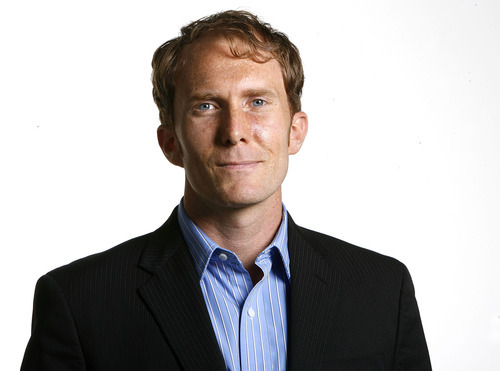This is an archived article that was published on sltrib.com in 2011, and information in the article may be outdated. It is provided only for personal research purposes and may not be reprinted.
The kid kept asking, wondering when the sun would go down. The dad kept telling his son to wait. The hot, burning light would soon disappear. Just be patient, just wait, then things would get good.
An hour. Thirty minutes. Twenty. Fifteen. Finally, the sun dropped. Ducking between third base and the left-field side of Dodger Stadium, just in time for Clayton Kershaw's first pitch against the New York Mets.
By the time Kershaw wound up and unloaded last Thursday night, the 49-year-old field at the center of a media storm this season looked better than ever. A pristine picture of Blue Heaven, even with the bankrupt Dodgers inching toward an embarrassing 38-51. Kershaw polished a gem. A sellout crowd of 56,000 was strong from the start and only strengthened as daylight gave way to artificial glare. The stadium was a priceless postcard, blending vintage with modern to produce the enviable style that only Los Angeles can create.
Three innings into the affair, the kid had forgotten about the annoying sun and was more concerned about collecting nachos and foul balls. He and his brothers had already grabbed a pregame souvenir from a no-name Mets infielder. But the kid wanted something real, true and lasting — a legitimate pop-up that started in a pitcher's hands, bounced off a wooden bat and fell straight into a child's glove. The kid never got it. But there was plenty of real, true stuff to go around.
Alternately praised and ridiculed when it opened in 1962, Dodger Stadium has become a landmark for the magic that can occur when you stick around, evolve and outlast the competition. It's an art-deco cocktail: the high-end, jet-setting early '60s blended with suburban strip-mall flair. It's L.A. then and L.A. now. Beautiful, horrible and fascinating. Oversized parking lots, overpriced food, overindulgent people. Devoted followers, passionate believers and some of the best and most memorable views in MLB.
There's nothing like driving in, parking, walking away from the stadium, cresting at the top of a barren hill and absorbing the enormity of an expertly framed downtown L.A.: clogged arteries, smoggy haze, 20th-century skyscrapers that are concrete gray. Then leaving the real world behind for three hours, trudging up toward the towering stadium and immediately blending in with the religious blue-and-white legion. Palm trees and a diluted-red sunset await. As do new air, a light breeze and Vin Scully. It's three hours of coolness. Three hours of baseball perfection.
All this coming from someone who's never, ever been a Dodgers fan. Like every good hardball nut, I went crazy as a kid when Kirk Gibson clobbered Dennis Eckersley in '89. Admired Orel Hershiser's streak. Respect Matt Kemp's talent, et cetera. But the team's been too bought for too many years, and recent rosters have had bad L.A. written all over them. Manny Ramirez? Frank McCourt? No thanks.
That stadium, though, it's something special. Wrigley and Fenway get all the respect. But Dodgerland has lasted for a reason. It has the view. And the vibe. And the allure.
It was my third visit in three years. I walked out this time having dropped a ridiculous $250 for an eighth-row ticket along the first-base side, parking, two beers and nachos. McCourt got his much-needed money.
Like the kid, I never came close to getting a foul ball. But I collected another memory that'll last a lifetime. And a free Andre Ethier bobblehead that'll make a darn fine paperweight.



